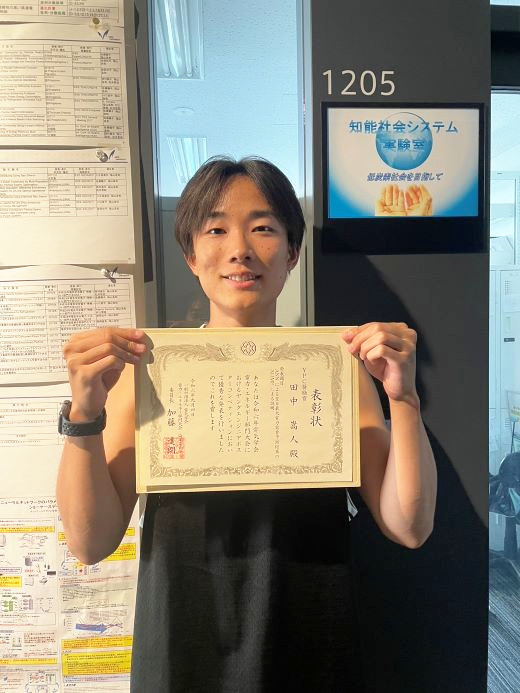[School of Interdisciplinary Mathematical Sciences] TANAKA Shuto receives the YPC Encouragement Award at the 2024 IEEJ Annual Conference on Power and Energy
Nov. 13, 2024


At the 2024 Annual Conference on Power and Energy of the Institute of Electrical Engineers of Japan (IEEJ) held on Thursday, September 5, 2024 at the Osaka Metropolitan University, TANAKA Shuto, a fourth-year student in the Department of Network Design at the School of Interdisciplinary Mathematical Sciences, received the 2024 YPC Encouragement Award of the Power and Energy Society, IEEJ.
At the IEEJ Annual Conference on Power and Energy, the YPC Encouragement Award is given to an excellent poster presentation worthy of a young engineer among young researchers who gave a poster presentation and are under 35 years of age.
Awarded paper:
TANAKA Shuto, YIN Jiahui, FUKUYAMA Yoshikazu, SHIMASAKI Yuichi, IIZAKA Tatsuya: “Interpretation of the next-day maximum power demand prediction by ANN using ALIME;” p. 28; IEEJ Annual Conference on Power and Energy; September 4, 2024
Paper content:
Electric power companies are required to supply electricity reliably. For this purpose, it is important to have an appropriate electric supply reserve capacity, and therefore it is essential to predict the next day’s maximum power demand with high accuracy. Up to now, artificial neural networks (ANN), deep neural networks (DNN), and multiple regression analysis have been used to predict the next day’s maximum power demand. Since ANN and DNN are black-box models, it is difficult to interpret their prediction results. Recently, however, eXplainable Artificial Intelligence (XAI) technology has been developed to elucidate black-box prediction models.
In this paper, the authors propose an interpretation of prediction values of next-day maximum power prediction by ANN using Autoencoder Based Approach for Local Interpretability (ALIME), which is one XAI technology, by applying Maximum Correntropy Criterion. The effectiveness of the proposed method was verified by comparing with the conventional method using actual demand data of a power company and various weather data.


